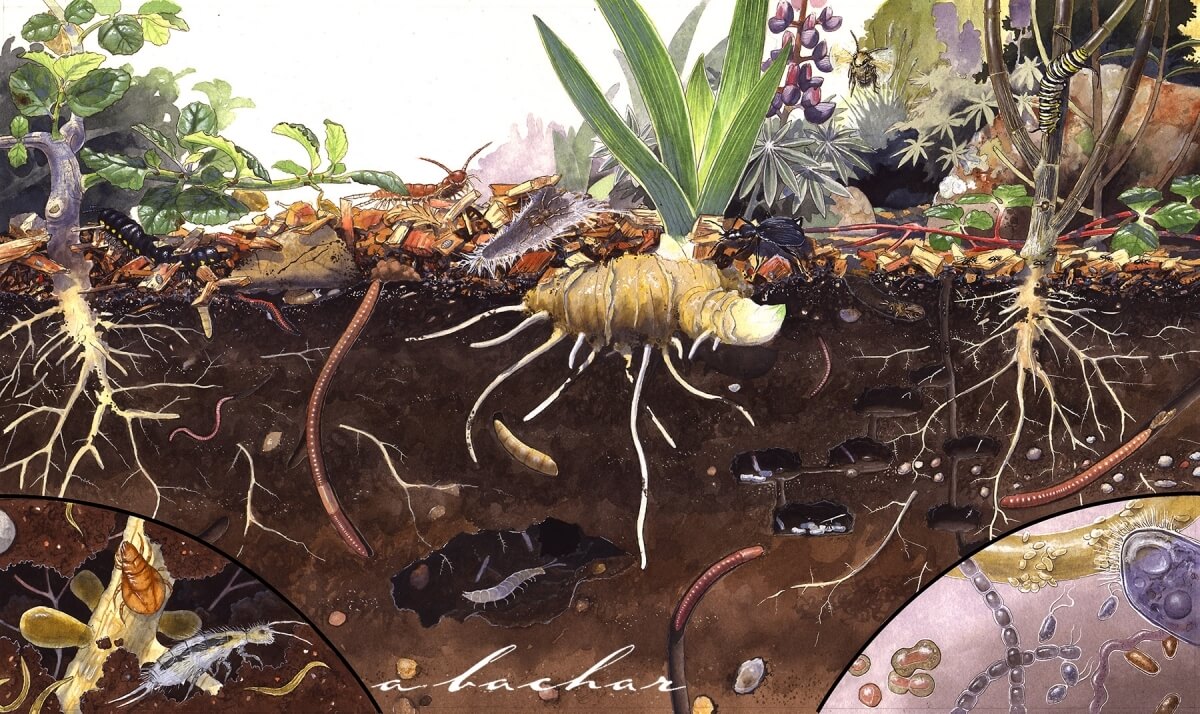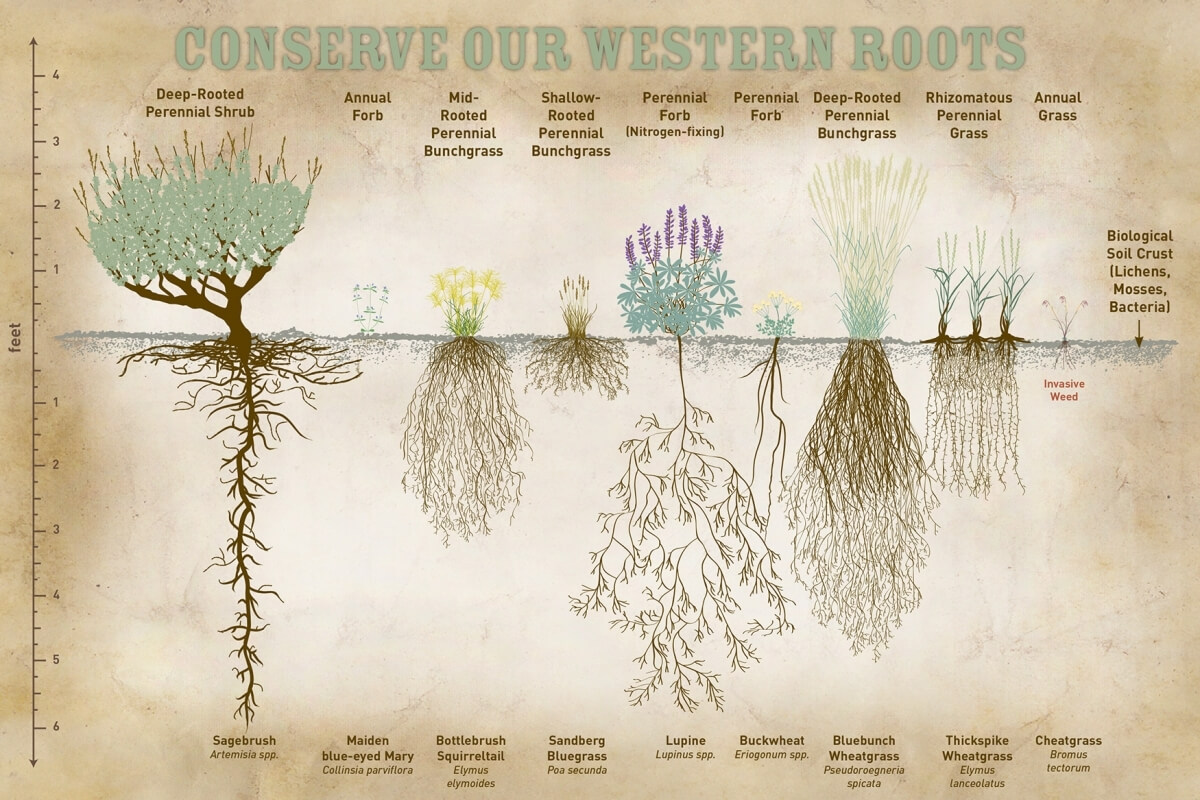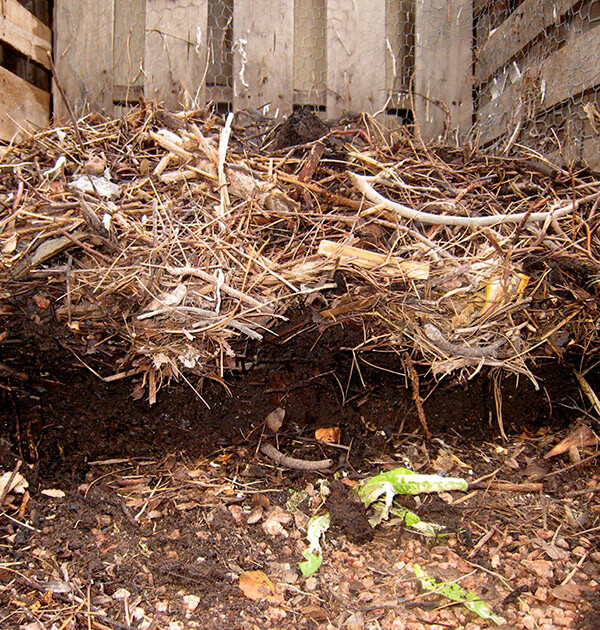Building Healthy Soil
This old postcard makes clear what is not obvious in our gardens—most native plants have larger root systems belowground than they do stems and leaves above. Roots are the nutrient exchange system between the microorganisms in the soil and the plant we can see.
The single most important thing you can do to create a garden full of life and vitality is to focus on building healthy soil. Feed your soil to feed your plants. This creates a natural co-dependence that allows plants to thrive, and eliminates the need for external inputs of inorganic fertilizers.
Soil is a living ecosystem populated by an interconnected web of life, which includes scavengers, decomposers, and predators. These creatures, many of which are microscopic, all work in harmony to improve soil texture and friability, increase water retention, heat absorption, and moderate the soil pH. A healthy soil food web provides a full spectrum of nutrients and trace elements, available in the forms that are best utilized by plants and at the time they are most needed by the plants, and also helps plants fight certain pathogens.
In nature, the food web is developed and maintained from the top down, with leaf and plant litter left in place to decompose naturally. Habitat gardeners build healthy soil by mimicking nature, always feeding the soil from the top down, thereby avoiding too much disruption to the creatures of the soil. Habitat gardeners recycle plant materials on site, either by mulching under and around all plantings, creating compost in managed piles, or creating brush piles.
Organic gardeners will often use sheet mulching when creating new planting areas to build healthy soil. Sheet mulching is a method of composting in place: layers of organic material are used to smother existing unwanted plants (a lawn, non-native groundcovers, or just unwanted weeds); they break down over time to create fertile soil.
Relevant pages on how to test your soil, how much and what kind of mulch to use, and how to sheet mulch—among many other topics—are described in the pages listed at right from the MMWD book, Watershed Approach to Landscaping, which you can download as PDFs.

The wonderful illustration above shows all the different kinds of activity, from micro to macro, that occur in the soil. Commissioned by Bay Nature and drawn by Amadeo Bachar (www.abachar.com), it appears in the Soil Matters booklet.


